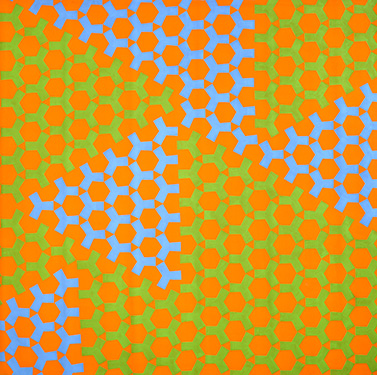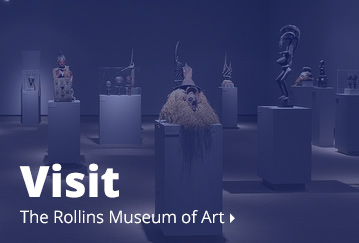Women and Abstraction
During the twentieth century, American women artists experimented with abstraction. Perhaps the most well-known American woman painter is Georgia O’Keeffe, who is represented in the permanent collection of the Cornell Fine Arts Museum. O’Keeffe’s abstract tendencies resulted in dynamic representations of the physical landscape and flowers. Another often cited story of women artists engaged in abstraction comes later in the twentieth century when painters such as Lee Krasner and Helen Frankenthaler engaged with large scale abstraction informed by abstract Expressionism and color field painting. The Cornell Fine Arts Museum possesses works of abstraction by the painter and sculptor Doris Leeper, sculptor Jane Manus, sculptor Barbara Sorensen, and a number of paintings by contemporary artists such as Sarah Morris, Carmen Herrera, and Rosemarie Castoro. Indeed this exhibition looks not only at twentieth-century examples, but also demonstrates the role of abstraction in contemporary art.
The facts about the presentation of works by women at major museums are grim. Just five percent of the works presented in modern and contemporary art galleries at major museums in the United States were created by women. Despite the fact that women represent over fifty percent of the population of artists, male artists have more gallery representation and their work sells at greater value points. In particular, stories of abstraction have been dominated by larger than life male artists—in the case of abstract expressionism it is hard not to focus on Jackson Pollock or Willem DeKooning, but there were several important women working during that time as well. Moreover, discussions of minimalism are often centered on Sol LeWitt and Ellsworth Kelly, this exhibition seeks to shed light on the contribution of women artists to abstraction from the post-war period to the present.
While representing women artists together, Women and Abstraction seeks not to limit the ways we read the included artists by gender, but as an attempt to enhance our understanding of the abstract tendencies in American art. Moreover, while works by major artists ground the exhibition, this project also highlights artists who have not received proper attention.


